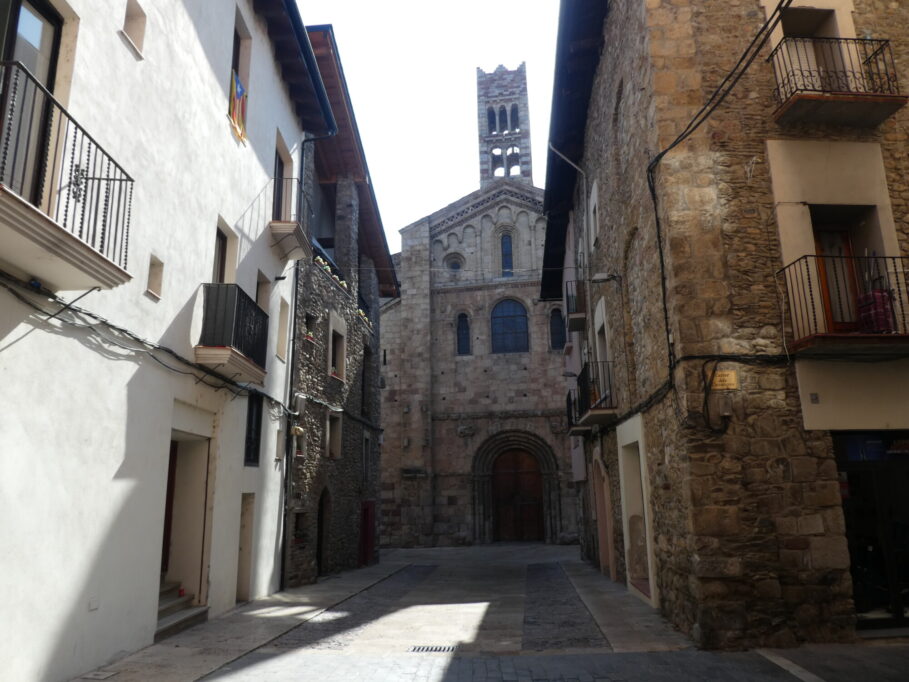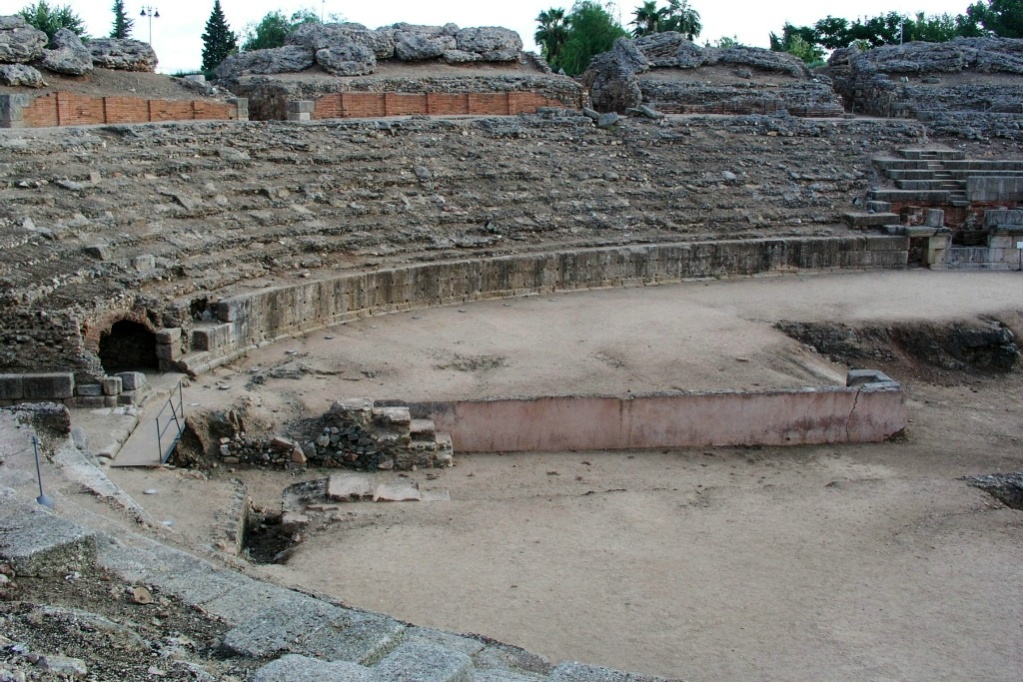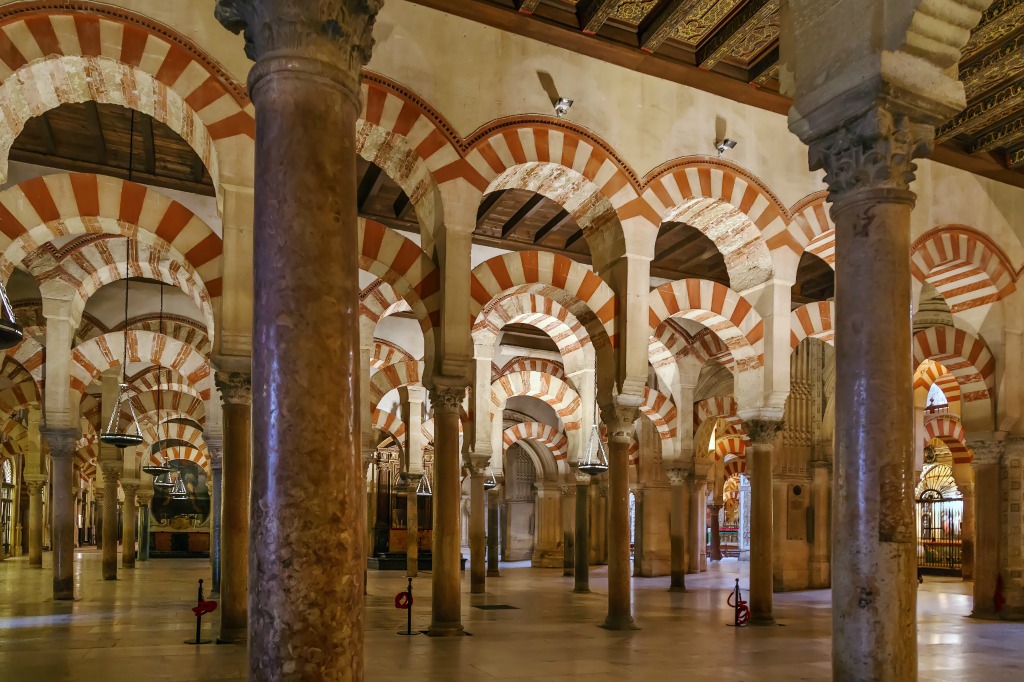La Seu d'Urgell Spain Travel Guide A Vagabond Life
Nestled in the heart of the Catalan Pyrenees, La Seu d’Urgell is a captivating destination that blends rich history, stunning landscapes, and vibrant culture. This charming Spanish town, located in the province of Lleida, serves as a gateway to adventure and tranquility, making it an essential stop in any Travel Guide to La Seu d’Urgell. Renowned for its iconic 12th-century Romanesque cathedral, Santa Maria d’Urgell, the town exudes medieval allure, with cobblestone streets and historic architecture inviting exploration. Surrounded by majestic mountains, La Seu d’Urgell is a haven for outdoor enthusiasts, offering hiking, skiing in nearby Andorra, and kayaking in the Olympic Park of Segre. The weekly market, brimming with local produce and crafts, showcases the town’s authentic Catalan spirit. Food lovers will delight in traditional dishes like escudella and artisanal cheeses. With its proximity to Andorra and natural parks, La Seu d’Urgell is perfect for day trips or a serene retreat. Whether you seek cultural immersion or adrenaline-fueled adventures, this Travel Guide to La Seu d’Urgell will unveil a destination where history, nature, and hospitality converge, promising an unforgettable journey.
La Seu d'Urgell Spain Map: La Seu d'Urgell Spain Travel Guide
Getting To Burgos Spain: Burgos Spain Travel Guide
How to Get to La Seu d’Urgell
- By Air: Fly into Barcelona-El Prat (BCN, 180 km, 2.5-3 hours by car) or Toulouse-Blagnac (TLS, 170 km). Rent a car for convenience, as direct public transport is limited.
- By Car: Drive via N-145 or C-14 roads. From Barcelona, take C-16 and C-14 for a scenic 3-hour route through the Pyrenees.
- By Bus: ALSA buses run from Barcelona (Estació del Nord) to La Seu d’Urgell, taking ~3 hours. From Andorra (10 km), take a short bus or taxi ride.
- By Train: Nearest station is Lleida (80 km away). Transfer to a bus or car to reach La Seu d’Urgell.
Getting Around Burgos Spain: Burgos Spain Travel Guide
How to Get Around La Seu d’Urgell
- On Foot: Explore the compact historic center, including the cathedral and cobblestone streets, easily by walking.
- By Bicycle: Rent bikes to cycle around town or along nearby Valira River trails.
- By Car: Useful for day trips to Andorra or Cadí-Moixeró Park, with ample parking in town.
- By Local Bus: Connects key areas like the Olympic Park, but check limited schedules in advance.
- By Taxi: Affordable for short trips or outlying areas, with stands near the cathedral and main square.
Things To See & Do In La Seu d'Urgell Spain: La Seu d'Urgell Spain Travel Guide
La Seu d’Urgell Cathedral (Santa Maria Cathedral)
La Seu d’Urgell Cathedral, known as Santa Maria d’Urgell, is the crown jewel of the town’s heritage and a cornerstone of things to do in La Seu d’Urgell. As Catalonia’s only fully preserved Romanesque cathedral, this 12th-century masterpiece draws visitors with its austere yet intricate architecture, serene cloister, and historical significance. Nestled in the heart of the historic quarter, it offers a profound connection to the region’s medieval past, complemented by the adjacent Diocesan Museum, which houses a trove of sacred art. Whether you’re an architecture enthusiast, a history buff, or simply seeking a moment of tranquility, the cathedral promises an unforgettable experience in the Pyrenean town.
History
Construction of the cathedral began in 1116 under Bishop Ot of Urgell and was completed around 1122, though later additions, like the Gothic gallery, reflect evolving styles. Designed in the Lombard Romanesque tradition, it features characteristic elements such as rounded arches, sturdy stonework, and decorative friezes. The cathedral has long been the seat of the Diocese of Urgell, a religious authority historically tied to the co-principality of Andorra, giving it unique geopolitical significance. Its cloister and the adjacent Sant Miquel church, built in the 11th century, predate the main structure, adding layers of historical depth. The Diocesan Museum, established to preserve artifacts from the region’s churches, includes treasures like the 10th-century Beatus of Liébana manuscript, a vividly illustrated apocalyptic text. Over centuries, the cathedral has weathered invasions and renovations, remaining a symbol of spiritual and cultural resilience.
Highlights
- Main Façade and Portals: Admire the west portal’s intricate carvings, depicting biblical scenes and fantastical creatures, framed by a robust archivolts. The south portal, though simpler, exudes Romanesque elegance.
- Cloister: Explore the 12th-century cloister, a peaceful courtyard with 50 carved capitals showcasing mythical beasts, biblical motifs, and floral patterns, each telling a unique story.
- Sant Miquel Church: Visit this 11th-century gem adjacent to the cathedral, with its minimalist Romanesque design, single nave, and serene ambiance, offering a contrast to the main structure.
- Diocesan Museum: Discover medieval treasures, including vibrant frescoes, gold-embellished altarpieces, and the Beatus of Liébana, a rare illuminated manuscript. Interactive displays provide context.
- Interior Architecture: Marvel at the cathedral’s three naves, supported by massive columns, and the apse’s subtle frescoes, which hint at its original decoration.
- Guided Tours: Opt for a guided tour (available in Catalan, Spanish, English) to uncover hidden details, such as the cloister’s symbolic carvings or the cathedral’s Andorran ties.
When to Visit
The best times to visit are spring (April-May) and autumn (September-October), when mild temperatures (15-20°C) and clear skies enhance outdoor exploration of the cloister and surrounding plaza. These seasons also see fewer tourists, allowing a more intimate experience. Summer (June-August) is vibrant, with local festivals like the Festa Major in late August adding music and dance, but expect larger crowds and warmer weather (up to 25°C). Winter (December-February) offers a quiet visit, though the cloister may feel chilly. The cathedral is open Tuesday-Saturday, 10 AM-2 PM and 4-7 PM, and Sundays, 10 AM-1:30 PM, with occasional closures for religious services. Entry costs approximately €4, with discounts for students and seniors. Arrive early to avoid tour groups, and check the diocese website for special events, such as organ concerts.
Address
Plaça del Deganat, s/n, 25700 La Seu d’Urgell, Lleida, Spain
Exploring La Seu d’Urgell Cathedral is an essential thing to do in La Seu d’Urgell, offering a deep dive into Romanesque art, medieval history, and the cultural ties that shape this Pyrenean gem.
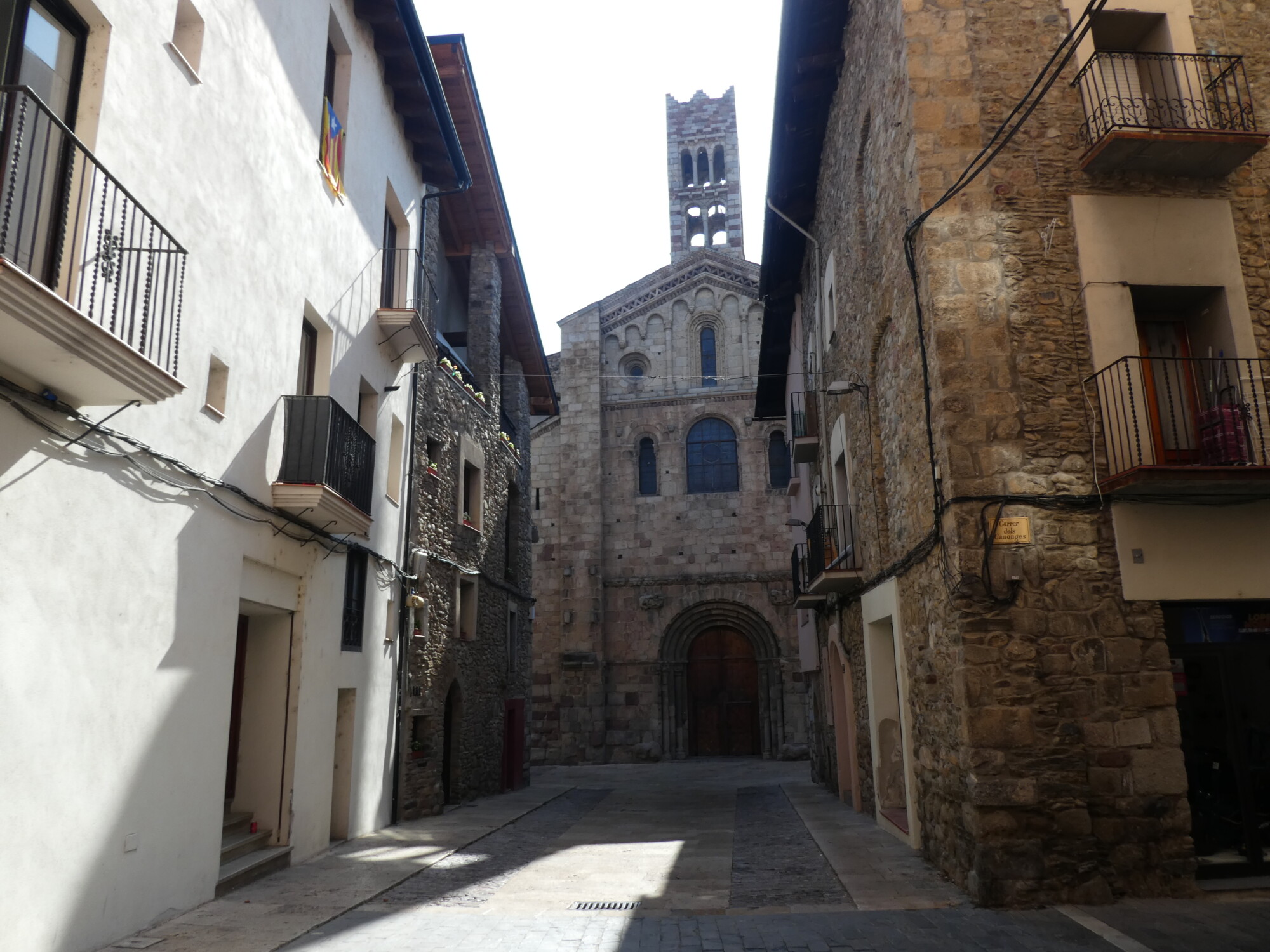
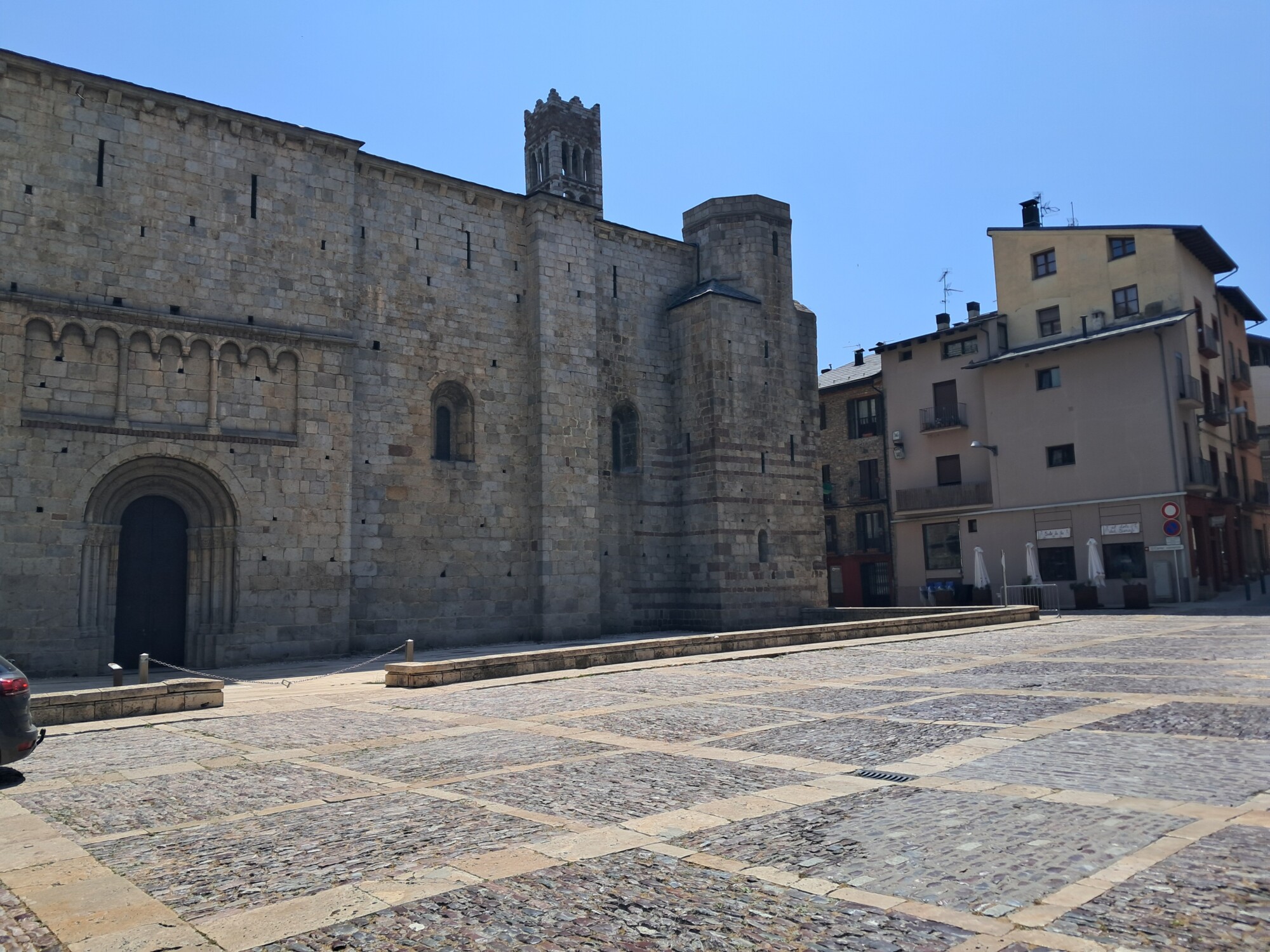
Sala Sant Domènec, La Seu d’Urgell
The Sala Sant Domènec traces its origins to the medieval era, when it was constructed as a Gothic church, reflecting the religious and cultural prominence of La Seu d’Urgell. The town, home to the Bishop of Urgell—one of the co-princes of Andorra—has long been a spiritual and political center in the region. The church’s Gothic architecture, characterized by pointed arches, ribbed vaults, and intricate stonework, was designed to inspire awe and devotion. Over the centuries, as the needs of the community evolved, the church was thoughtfully repurposed into a civic space while preserving its historical integrity. This transformation allowed Sala Sant Domènec to remain a cornerstone of local life, hosting everything from religious ceremonies in its early days to modern cultural events that draw both locals and visitors. Today, it stands as a testament to La Seu d’Urgell’s ability to honor its past while embracing the present, offering a tangible link to the town’s storied heritage.
- Stunning Gothic Architecture: Marvel at the beautifully preserved Gothic elements, including soaring pointed arches, ribbed vaults, and delicate stone carvings that reflect the craftsmanship of the medieval era.
- Vibrant Cultural Programming: Immerse yourself in a rich calendar of events, from classical music concerts and theatrical performances to contemporary art exhibitions, showcasing the creative spirit of Catalonia.
- Community Engagement: Participate in or observe local traditions through workshops, lectures, and festivals that bring the people of La Seu d’Urgell together in this welcoming space.
- Historical Significance: Feel the weight of centuries as you stand in a venue that has served as a gathering place for religious, social, and cultural activities for generations.
- Scenic Surroundings: Located in the heart of La Seu d’Urgell, the Sala Sant Domènec is ideally positioned for exploring nearby landmarks, such as the Romanesque Cathedral of Santa Maria or the breathtaking Pyrenees mountains, perfect for hiking and outdoor adventures.
- Versatile Venue: Experience the unique atmosphere of a space that effortlessly transitions from solemn historical site to lively cultural hub, offering something for every visitor.
Sala Sant Domènec
Carrer de Sant Domènec, s/n
25700 La Seu d’Urgell, Lleida, Catalonia, Spain
Visiting Sala Sant Domènec is a delightful addition to any itinerary in La Seu d’Urgell. Check the local event calendar before your trip, as the venue frequently hosts concerts, exhibitions, and seasonal festivals that provide a deeper connection to the region’s culture. The surrounding town offers charming cafes and restaurants where you can savor traditional Catalan cuisine, such as escudella (a hearty stew) or local cheeses. For those exploring the broader Pyrenees, Sala Sant Domènec is an excellent starting point before venturing into nearby Andorra or embarking on outdoor activities like skiing in winter or hiking in summer. The venue’s central location makes it easily accessible on foot, and its proximity to other historic sites makes it a perfect stop on a cultural tour of La Seu d’Urgell.
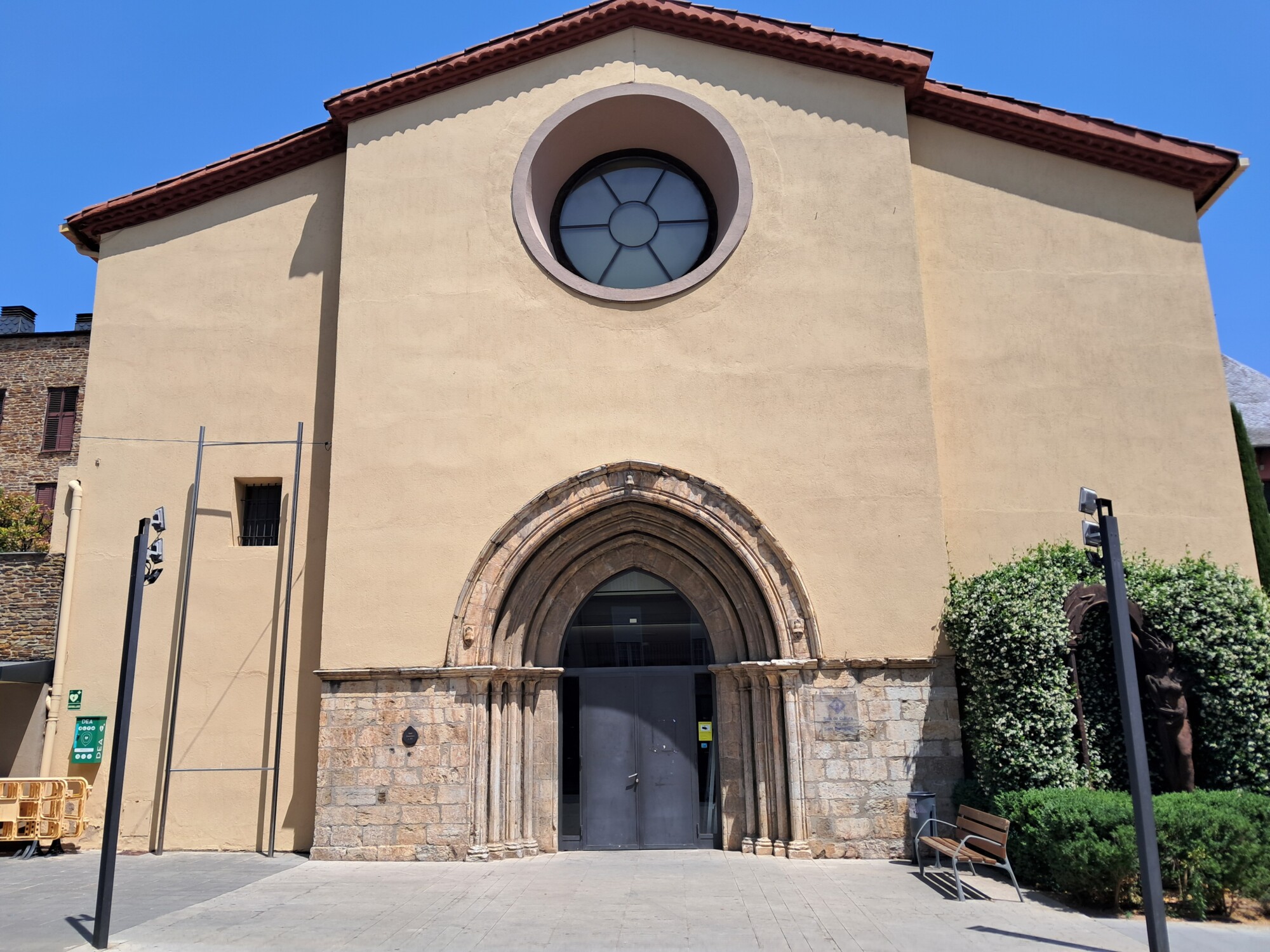
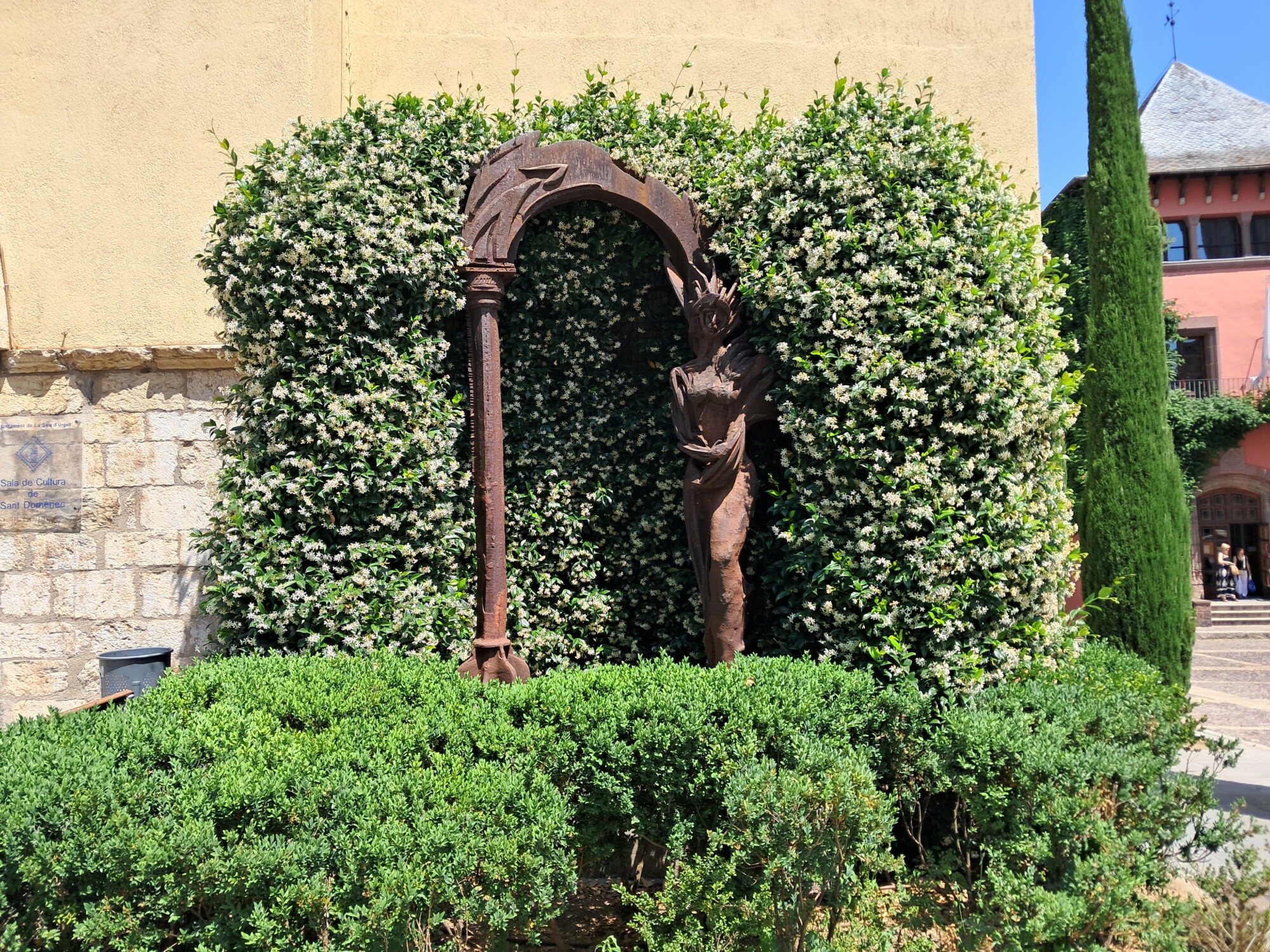
Historic Quarter and Carrer Major
The Historic Quarter of La Seu d’Urgell, with its labyrinth of arcaded streets and medieval ambiance, is a must-visit for those seeking immersive things to do in La Seu d’Urgell. Centered on Carrer Major, the town’s main artery, this area pulses with history, from ancient trading hubs to modern-day markets. The quarter’s stone buildings, shaded porticos, and historic mansions evoke a time when La Seu d’Urgell was a thriving Pyrenean crossroads. Perfect for leisurely strolls, photography, or savoring local cuisine, the Historic Quarter offers a vibrant blend of past and present.
History
La Seu d’Urgell’s Historic Quarter traces its origins to the Middle Ages, when the town flourished as a commercial and religious center under the Diocese of Urgell. Carrer Major, lined with arcaded buildings, was the epicenter of trade, where merchants sold grain, textiles, and livestock under stone porticos designed to shield them from rain and sun. Grain was so central to the economy that it served as currency, measured by an ancient artifact still visible on Carrer Major. Mansions like Cal Tarragona and Cal Patalín, built by wealthy families, reflect the town’s prosperity in the 15th-17th centuries. The quarter survived wars and modernization, preserving its medieval layout and charm, now protected as a cultural heritage site.
Highlights
- Carrer Major’s Arcades: Wander beneath the stone arcades, admiring their weathered arches and the mix of Gothic and Renaissance details on shopfronts.
- Cereal Measurement Artifact: Spot this curious medieval relic embedded in a wall, a stone basin used to standardize grain measurements, offering a tangible link to the past.
- Historic Mansions: Admire Cal Tarragona and Cal Patalín, with their ornate doorways and coats of arms, showcasing the wealth of local nobility.
- Weekly Markets: Visit the Wednesday and Saturday markets (8 AM-2 PM) for Alt Urgell cheeses, artisanal crafts, and fresh produce, a lively tradition drawing locals and visitors.
- Plaça del Oms: Stop at this charming square, home to the tourist office, where you can grab maps, audio guides, or join walking tours of the quarter.
- Local Dining: Enjoy Catalan dishes like trinxat or escudella at cafés along Carrer Major, with outdoor seating perfect for people-watching.
When to Visit
Spring (April-May) and autumn (September-October) are ideal, with pleasant temperatures (15-20°C) and colorful foliage or blooms enhancing the quarter’s charm. These seasons are perfect for walking and photography, with fewer tourists than summer. Summer (June-August) brings warmth (up to 25°C) and festivals, like the Festa Major, but markets can be crowded. Winter (December-February) offers a quiet, cozy vibe, with Christmas markets adding sparkle. The quarter is accessible year-round, with shops and cafés open daily (typically 10 AM-8 PM, with siesta closures). Visit early mornings for serene strolls or market days for local energy. The tourist office at Plaça del Oms provides free audio tours and maps.
Address
Carrer Major, 25700 La Seu d’Urgell, Lleida, Spain
Exploring the Historic Quarter and Carrer Major is one of the most rewarding things to do in La Seu d’Urgell, offering a timeless journey through medieval streets, vibrant markets, and Catalan culture.
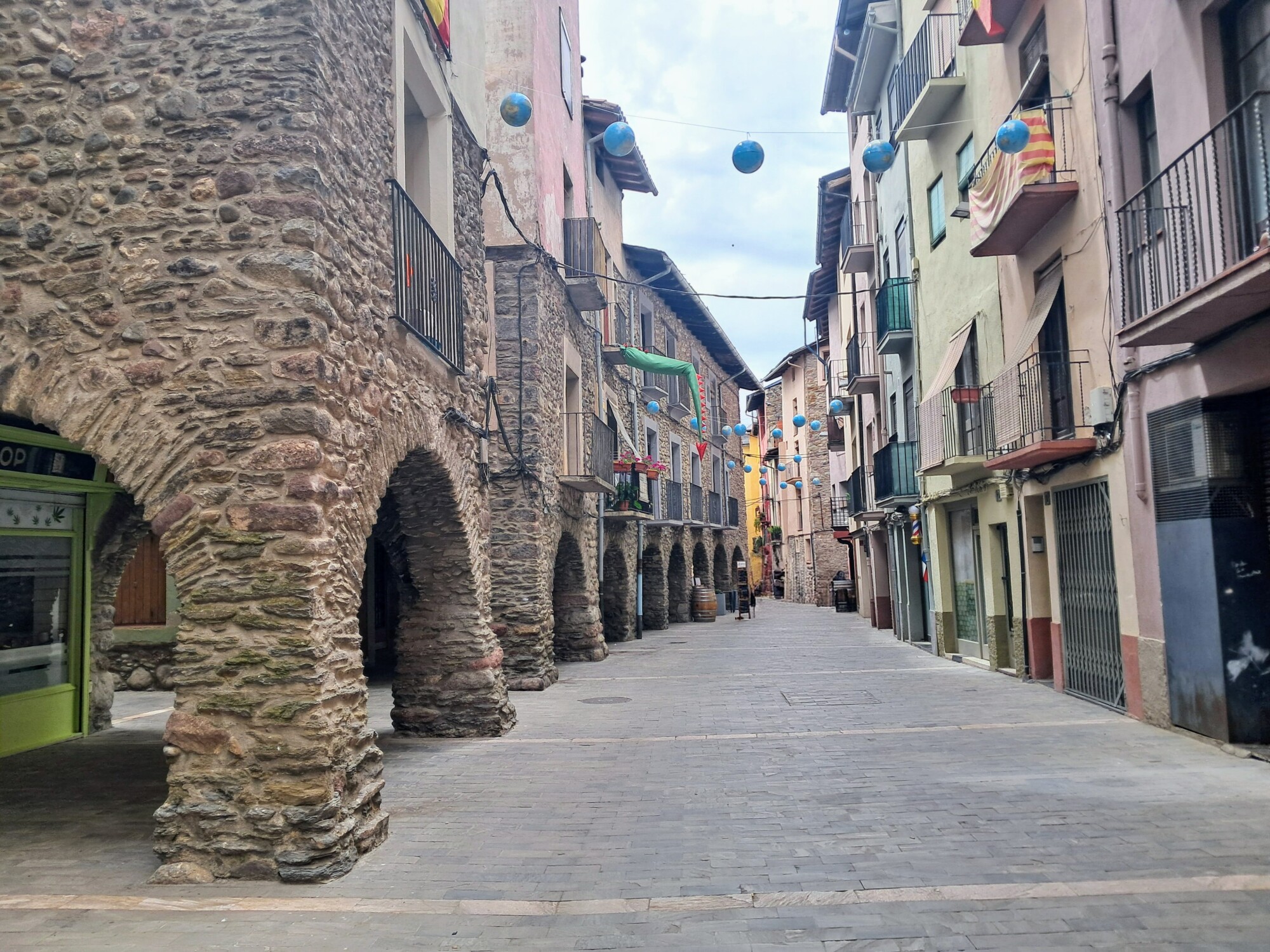
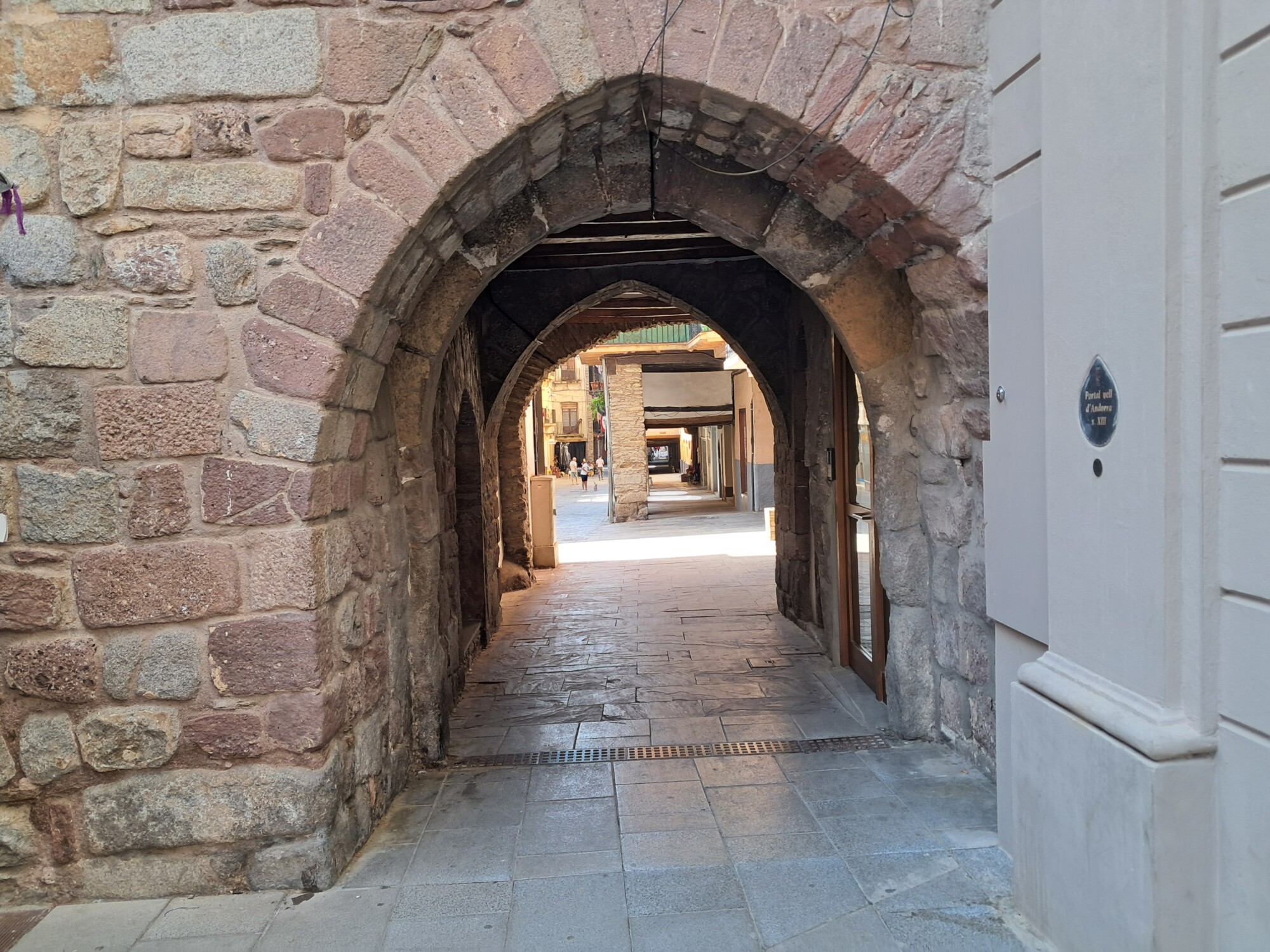
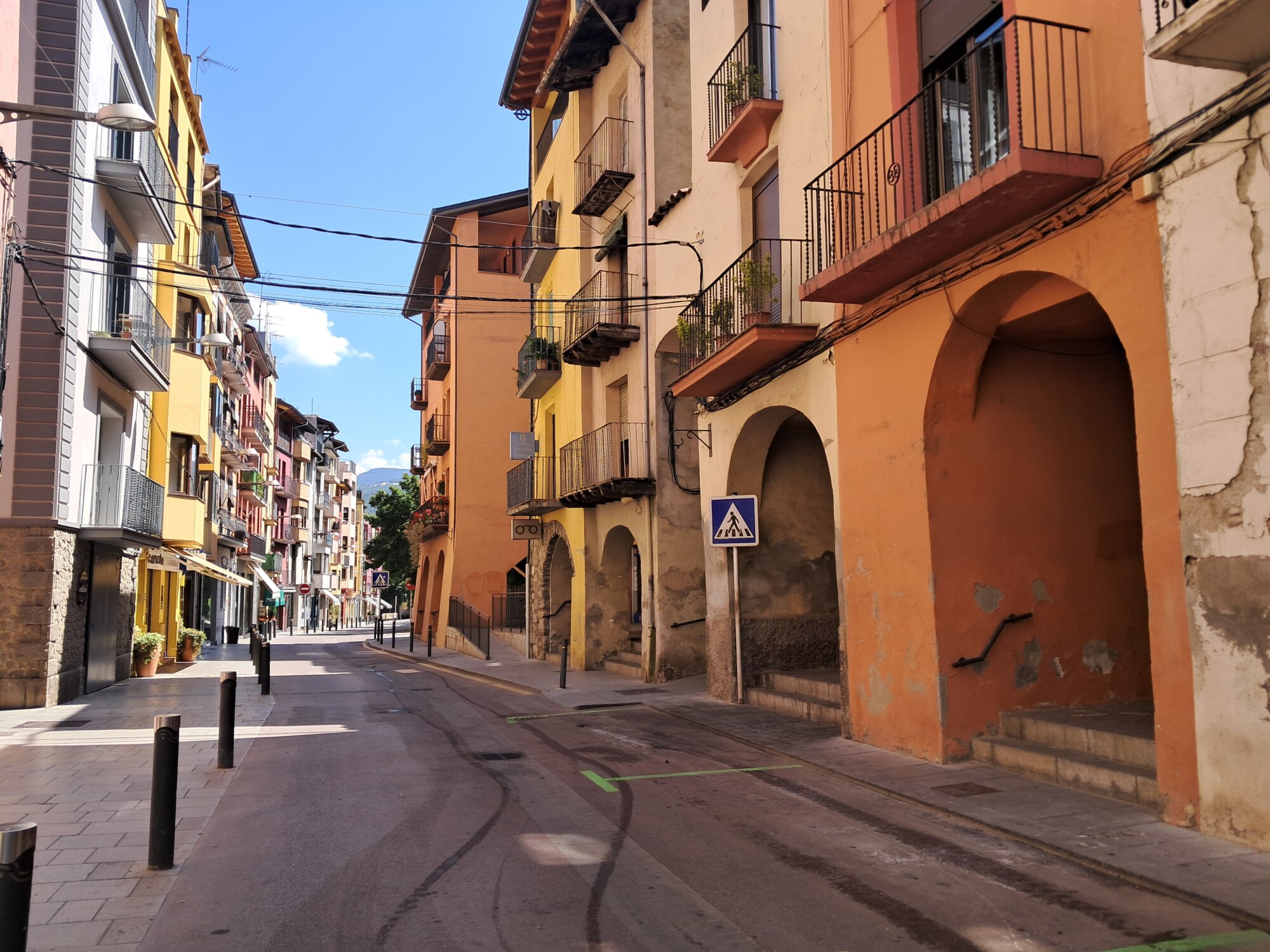
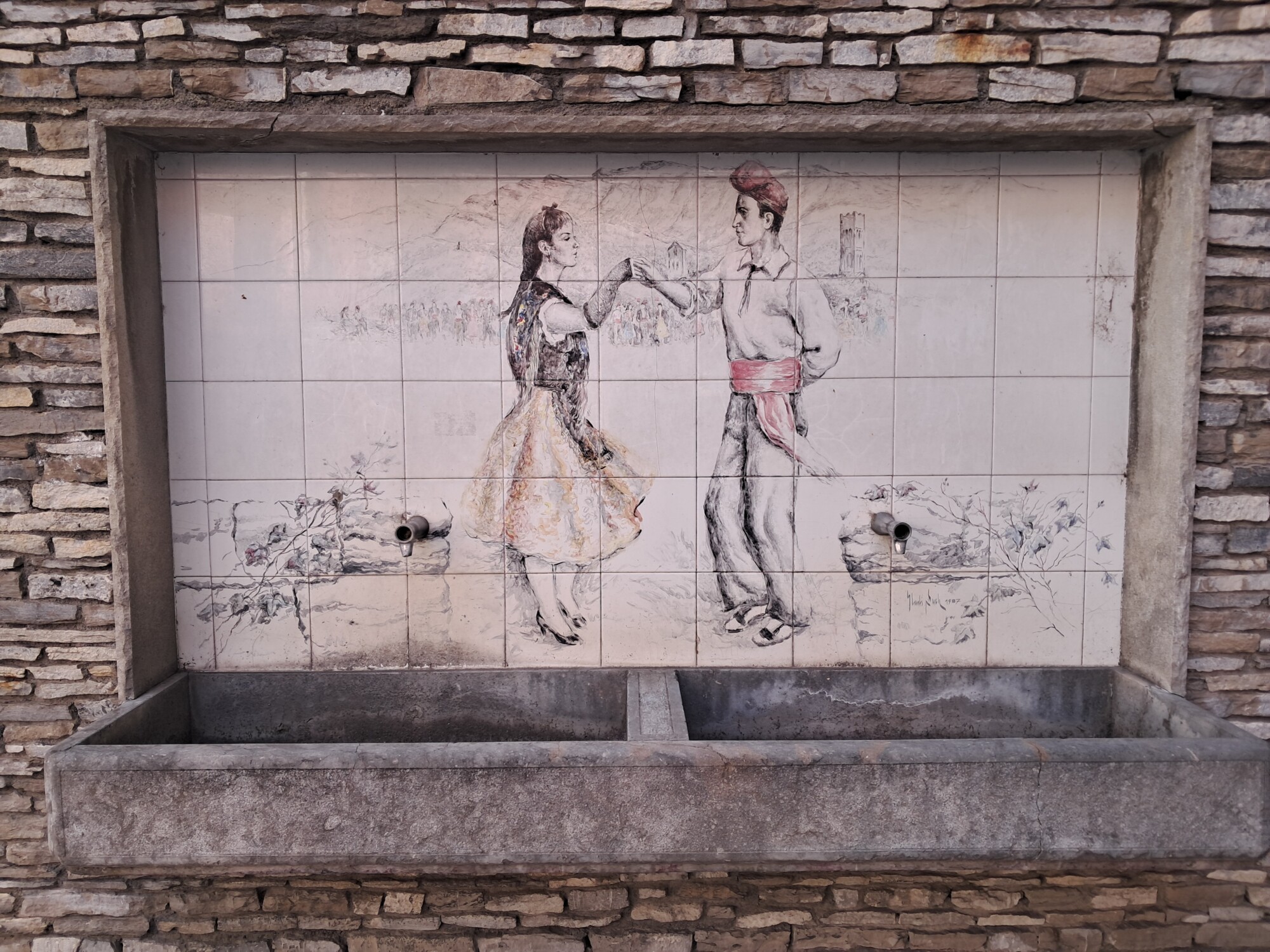
Castell de Ciutat
Introduction
Castell de Ciutat, a historic fortress perched on a hill overlooking the Segre Valley, is a captivating blend of history, luxury, and natural beauty, making it one of the top things to do in La Seu d’Urgell. Originally a defensive stronghold, it now houses a 4-star Relais & Châteaux hotel, yet retains its ancient walls and panoramic views of the Pyrenees. Whether you’re exploring its storied past, dining on gourmet Catalan cuisine, or simply soaking in the scenery, the castle offers a unique experience that marries heritage with modern elegance.
History
The castle’s origins date to the 7th century, when Visigoths built a defensive post to guard the Segre Valley. Reconstructed in the 17th century during conflicts between Spain and France, it was fortified with thicker walls and towers to withstand sieges. Its strategic hilltop location made it a key outpost in the Pyrenees, controlling trade routes and borders. The nearby Torre de Solsona, a cylindrical watchtower, complemented its defenses. In the 20th century, the castle was restored and transformed into a luxury hotel, preserving its historic core while adding modern amenities. Its ties to the Diocese of Urgell underscore its regional importance, and it remains a symbol of La Seu d’Urgell’s resilience.
Highlights
- Panoramic Views: Enjoy sweeping vistas of La Seu d’Urgell, the Segre Valley, and the snow-capped Pyrenees from the castle’s terraces, ideal for photography.
- Historic Walls: Explore the preserved 17th-century fortifications, with audiovisual guides detailing Visigothic origins and military history.
- Torre de Solsona: Hike 15 minutes to this nearby watchtower for additional views and a glimpse of medieval defense systems.
- Tàpies Restaurant: Dine at the hotel’s acclaimed restaurant, savoring Catalan dishes like trinxat or suquet de peix, paired with local Alt Urgell wines.
- Gardens and Grounds: Stroll the manicured gardens, dotted with sculptures and offering tranquil spots to relax with mountain views.
- Guided Tours: Book a tour (available for non-guests) to access restricted areas, including battlements and historic chambers, with insights into the castle’s past.
When to Visit
Spring (April-May) and autumn (September-October) are optimal, with mild weather (15-20°C) and clear skies perfect for hiking to Torre de Solsona or enjoying terrace views. These seasons offer vibrant landscapes, with spring wildflowers or autumn foliage. Summer (June-August) is popular for dining and events, but temperatures can reach 25°C, and the hotel may be busier. Winter (December-February) provides a cozy, snow-dusted ambiance, ideal for indoor tours or dining, though outdoor areas may be chilly. The castle is open year-round, with tours and dining subject to hotel schedules (reservations recommended). Day visitors should call ahead to confirm access, especially in peak seasons.
Address
Carretera N-260, km 229, 25700 La Seu d’Urgell, Lleida, Spain
Visiting Castell de Ciutat is a highlight among things to do in La Seu d’Urgell, offering history, luxury, and some of the most spectacular views in the Pyrenees.
Segre Olympic Park
Segre Olympic Park, set along the glistening Segre River, is a dynamic destination for adventure and relaxation, ranking high among things to do in La Seu d’Urgell. Built for the 1992 Barcelona Olympics, its 800-meter artificial whitewater channel is a world-class venue for water sports like rafting and kayaking. Surrounded by lush parkland and framed by the Pyrenees, it caters to thrill-seekers, families, and nature lovers alike, offering a perfect blend of adrenaline and scenic beauty in the heart of Catalonia’s mountains.
History
Inaugurated for the 1992 Olympic Games, Segre Olympic Park was designed to host canoeing and kayaking events, marking La Seu d’Urgell as a key Olympic venue. The artificial channel, fed by the Segre River, was an engineering marvel, allowing precise control of water flow for competitive and recreational use. Post-Olympics, the park evolved into a regional sports hub, attracting international athletes and tourists. Its sustainable design, using river water and renewable energy, has kept it a model for eco-friendly facilities. The park also hosts cultural events, like music festivals, reinforcing its role as a community landmark.
Highlights
- Water Sports: Try rafting, kayaking, or hydrospeed on the whitewater channel, with beginner and advanced options led by certified guides.
- Family-Friendly Activities: Enjoy calm boat rides or canoeing in gentler sections, perfect for kids and novices, with safety gear provided.
- Picnic Areas: Relax in the park’s shaded lawns, equipped with tables and benches, ideal for family picnics with Pyrenean views.
- Scenic Trails: Walk or cycle along riverside paths, spotting local wildlife like herons or otters, with the Cadí-Moixeró peaks as a backdrop.
- Facilities: Access modern changing rooms, equipment rentals, and a small café serving local drinks like horchata or snacks.
- Events: Catch occasional competitions or festivals, such as the annual canoe slalom championships, adding excitement to your visit.
When to Visit
Summer (June-August) is prime for water sports, with warm temperatures (20-25°C) and extended hours (9 AM-8 PM), though booking activities in advance is wise due to popularity. Spring (April-May) offers milder weather (15-20°C) and fewer crowds, ideal for calm boating or walking. Autumn (September-October) brings crisp air and vibrant foliage, perfect for scenic relaxation. Winter (December-February) sees reduced water activities but is great for quiet walks. The park operates daily, with guided activities available by reservation. Check the park’s website for seasonal schedules or special events, and bring sunscreen and water for summer visits.
Address
Parc Olímpic del Segre, 25700 La Seu d’Urgell, Lleida, Spain
Segre Olympic Park is a top choice for adventurous and family-friendly things to do in La Seu d’Urgell, offering heart-pounding sports and serene nature in a stunning Pyrenean setting.
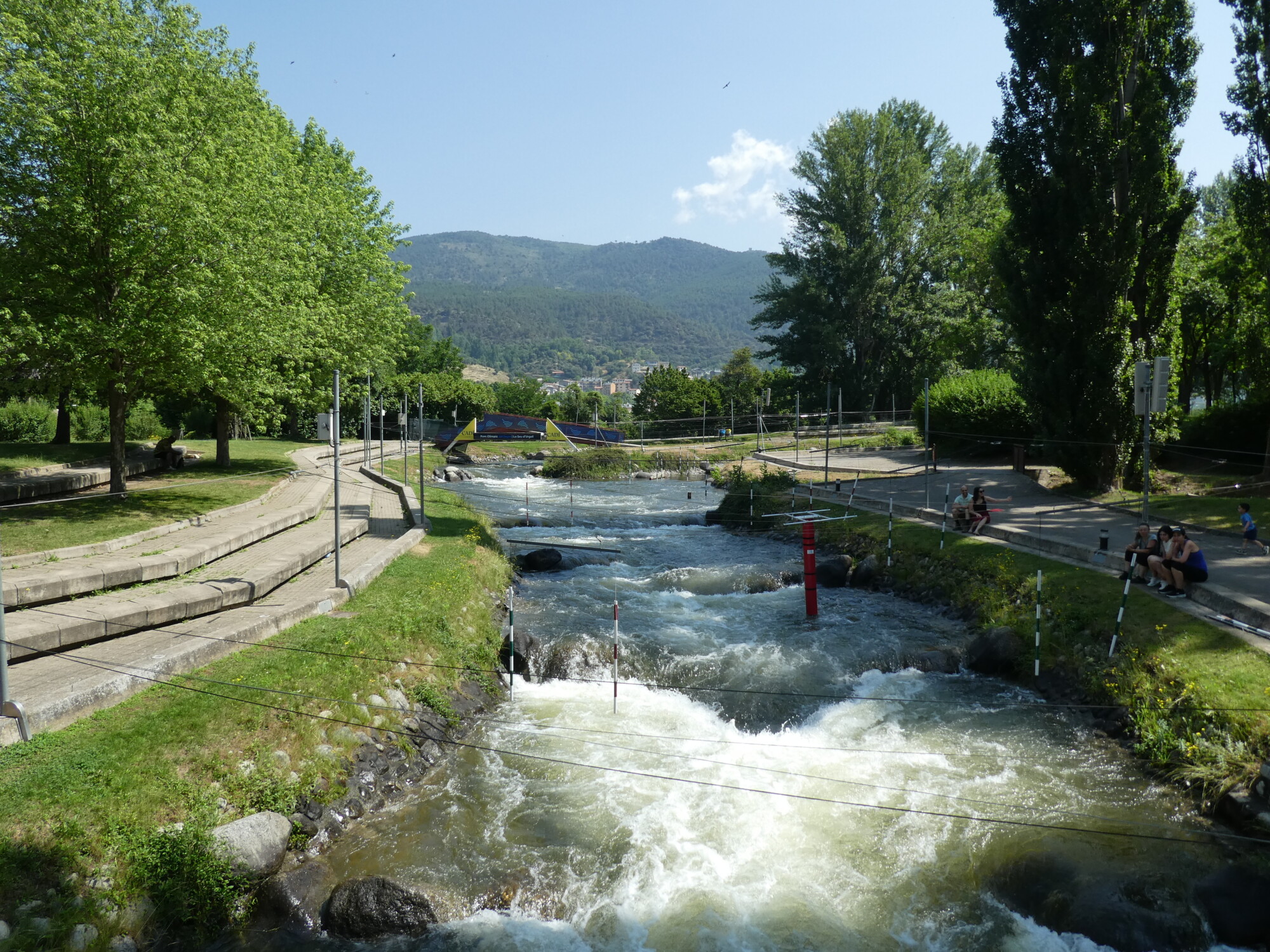
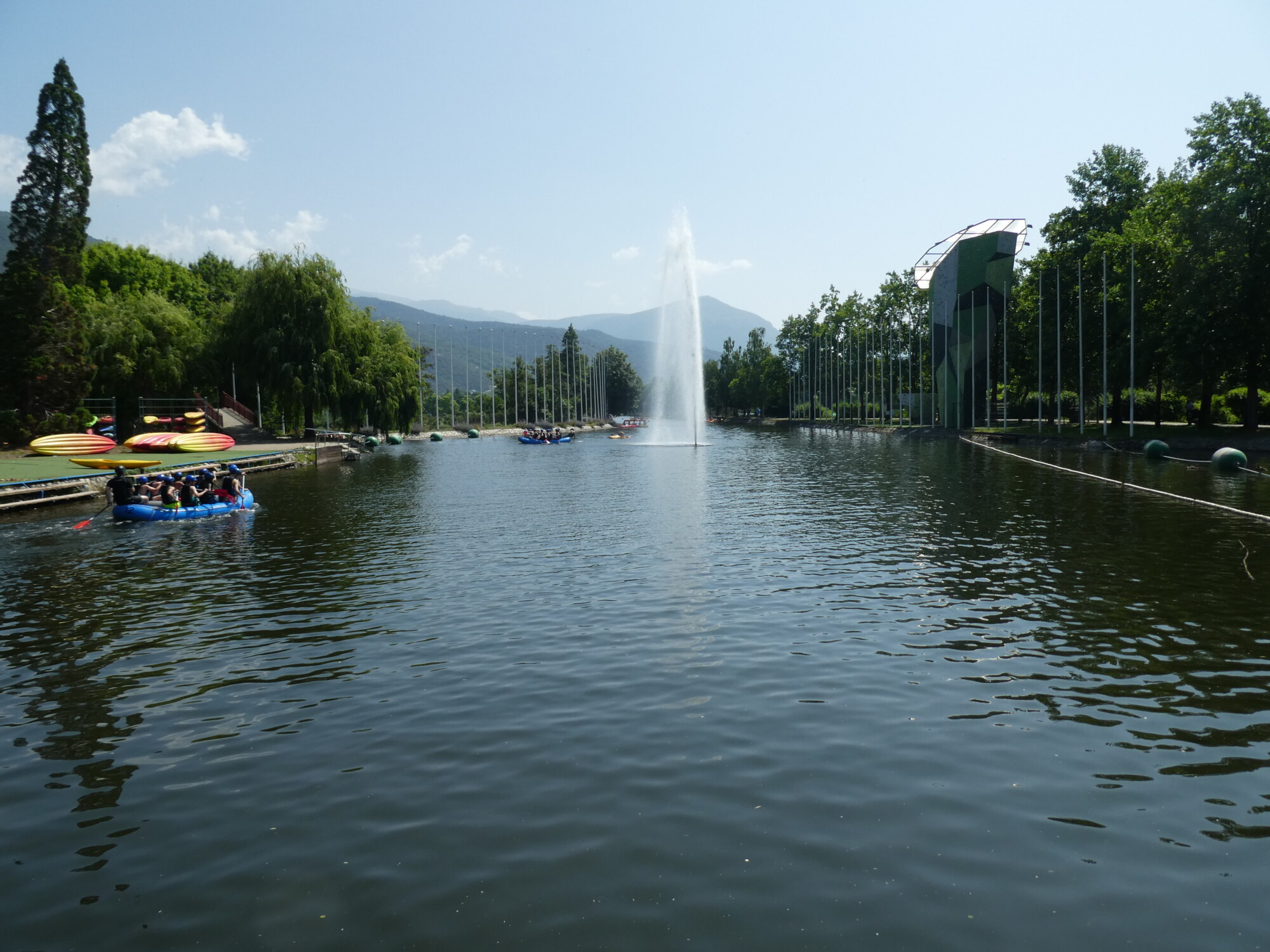
Espai Ermengol Museum
Espai Ermengol – Museu de la Ciutat is a cultural beacon among things to do in La Seu d’Urgell, offering an immersive journey into the region’s heritage. Housed in a historic building on Carrer Major, this museum celebrates Alt Urgell’s traditions, from cheese-making to medieval life, with engaging exhibits and a rooftop mirador boasting panoramic views. Ideal for visitors seeking to understand La Seu d’Urgell’s identity, the museum combines interactive displays, local artifacts, and warm hospitality, making it a must-visit for families, history enthusiasts, and curious travelers.
History
Opened in 2010, Espai Ermengol was established to preserve and share the cultural legacy of La Seu d’Urgell and the Alt Urgell region. The building, a restored 17th-century structure, once served as a private residence, reflecting the town’s architectural evolution. The museum’s focus on cheese-making honors Alt Urgell’s dairy heritage, particularly its famous Formatge d’Urgell, a creamy cow’s milk cheese with DOP status. Exhibits also cover medieval trade, religious art, and rural life, drawing from archaeological finds and local archives. The museum serves as a community hub, hosting workshops, lectures, and temporary exhibitions that connect past and present.
Highlights
- Cheese-Making Exhibit: Dive into Alt Urgell’s dairy tradition with interactive displays on cheese production, including tastings of Formatge d’Urgell (seasonal).
- Medieval Artifacts: View pottery, tools, and textiles from the Middle Ages, showcasing La Seu d’Urgell’s role as a trade hub.
- Rooftop Mirador: Climb to the top-floor terrace for 360-degree views of the cathedral, Pyrenees, and town, perfect for photography.
- Temporary Exhibitions: Explore rotating displays on topics like Pyrenean folklore or modern Catalan art, keeping the museum dynamic.
- Audio Guides: Use free audio tours (Catalan, Spanish, English) to delve deeper into exhibits, with a downloadable city tour extending to nearby sites.
- Workshops: Participate in family-friendly activities, like cheese-making classes or craft sessions, often held during holidays (check schedules).
When to Visit
Spring (April-May) and autumn (September-October) are ideal, with mild weather (15-20°C) perfect for enjoying the mirador and exploring nearby streets. Summer (June-August) is busier but offers extended hours (10 AM-8 PM) and occasional evening events. Winter (December-February) is quieter, with indoor exhibits providing a cozy escape, though the mirador may be windy. The museum is open Tuesday-Saturday, 10 AM-2 PM and 4-7 PM, and Sundays, 10 AM-2 PM, with entry around €3 (discounts for children). Visit mid-morning for a relaxed experience, and inquire about guided tours or workshops at the front desk. The staff’s enthusiasm enhances the visit, so don’t hesitate to ask for recommendations.
Address
Carrer Major, núm. 8, 25700 La Seu d’Urgell, Lleida, Spain
Espai Ermengol Museum is a captivating thing to do in La Seu d’Urgell, offering a rich tapestry of local history, hands-on experiences, and stunning views that bring the region’s soul to life.
Below is a detailed guide for Valira Park in La Seu d’Urgell, Spain, crafted to match the structure and depth of the previous guides for other attractions. The guide includes extensive information under each subheading (Introduction, History, Highlights, When to Visit, Address), with the Highlights section formatted as bullet points for clarity. The keyword “things to do in La Seu d’Urgell” is integrated throughout to emphasize its appeal as a key attraction. Information is drawn from available sources, including web results provided, and enriched with vivid descriptions, practical tips, and cultural context to enhance your visit.
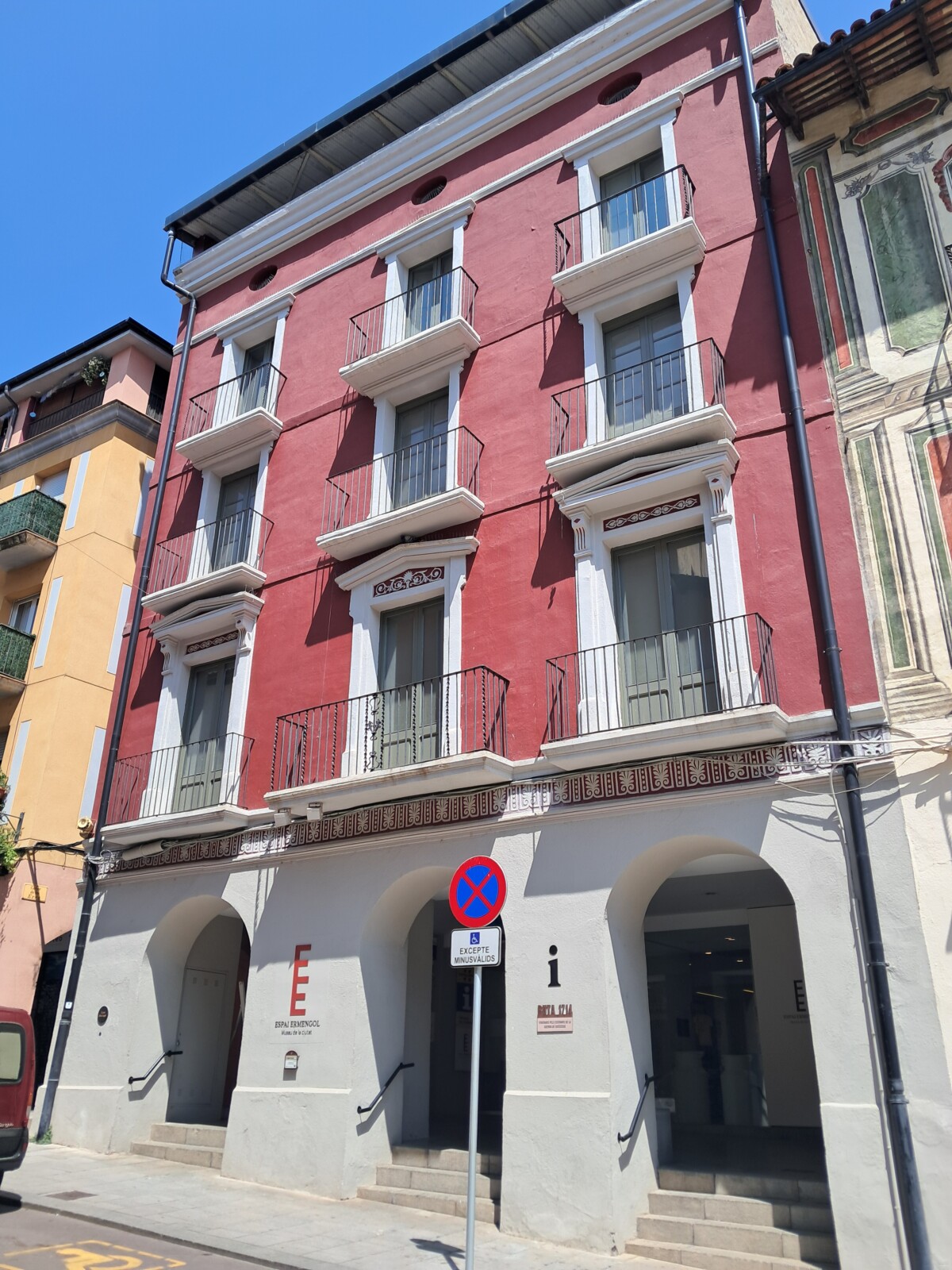
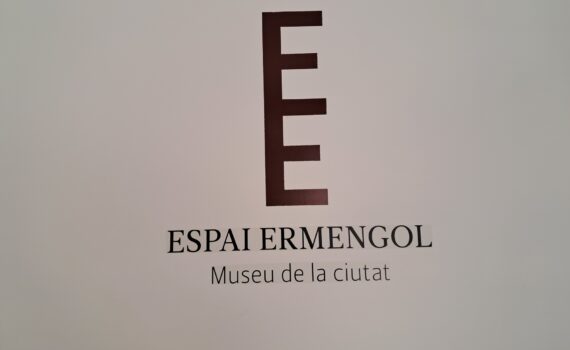
Valira Park
Valira Park, a serene riverside oasis along the Valira River, is one of the most inviting things to do in La Seu d’Urgell for those seeking tranquility and natural beauty. Located on the left bank of the river as it flows through the town, this urban park blends lush greenery with a unique modern cloister designed by local architect Lluís Racionero. Unlike the bustling Segre Olympic Park, Valira Park offers a peaceful retreat, perfect for leisurely strolls, picnics, or quiet reflection amidst the Pyrenean landscape. Its proximity to the historic quarter and the river’s gentle flow make it an ideal spot for visitors of all ages, from families to solo travelers, looking to connect with nature and local culture in the heart of Catalonia’s mountains.
History
Valira Park emerged in the late 20th century as part of La Seu d’Urgell’s urban expansion, driven by the need to integrate green spaces into the growing town. The Valira River, a tributary of the Segre flowing from Andorra, has long shaped the region’s geography and culture, serving as a natural border with nearby Castellciutat. The park was designed to preserve the river’s native riparian vegetation, creating a seamless transition between urban life and the natural environment. Its standout feature, the modern cloister by Lluís Racionero, was added in the 1990s as a contemporary homage to the Romanesque cloister of La Seu d’Urgell Cathedral. Unlike the cathedral’s medieval carvings, Racionero’s cloister features capitals depicting 20th-century figures and events, reflecting a bold fusion of tradition and modernity. The park’s development reflects the town’s commitment to sustainable urban planning, maintaining autochthonous species like deciduous trees while enhancing public access to the riverfront.
Highlights
- Racionero’s Modern Cloister: Marvel at the unique cloister, a replica of the cathedral’s but with capitals carved with contemporary icons like Karl Marx, Marilyn Monroe, Elvis Presley, and even dictators like Franco and Hitler, alongside motifs from Picasso’s Guernica, offering a thought-provoking blend of art and history.
- Riverside Walks: Stroll along the Valira’s left bank, surrounded by lush riparian vegetation, including willows and poplars, with the soothing sound of flowing water and scenic views of the Cadí mountains.
- Picnic and Relaxation Areas: Enjoy shaded lawns and benches perfect for picnics, reading, or simply soaking in the tranquil atmosphere, with ample space for families or groups.
- Native Flora and Fauna: Spot local wildlife, such as herons or small fish, and admire the park’s integration of native deciduous trees, creating a natural urban oasis.
- Proximity to Town: Easily combine a visit with other things to do in La Seu d’Urgell, like exploring Carrer Major or the cathedral, as the park is just steps from the historic quarter.
- Dog-Friendly Paths: Bring your pet to enjoy the park’s designated dog-friendly areas, ideal for a relaxed walk with scenic river views.
When to Visit
Valira Park is a year-round destination, but spring (April-May) and autumn (September-October) are particularly delightful, with mild temperatures (15-20°C) and vibrant seasonal colors—blooming wildflowers in spring or golden foliage in autumn. These seasons are perfect for leisurely walks or picnics, with clear skies enhancing views of the Pyrenees. Summer (June-August) brings warmer weather (up to 25°C), making it ideal for morning or evening visits to avoid midday heat; the park’s shaded areas provide relief. Winter (December-February) offers a crisp, quiet ambiance, with occasional snow dusting the nearby mountains, though the cloister’s details are best appreciated in brighter light. The park is open 24/7, free to enter, and accessible for all ages, with flat paths suitable for strollers or wheelchairs. Visit early mornings for solitude or late afternoons for a lively yet relaxed atmosphere. Check the town’s website (www.laseu.cat) (www.laseu.cat) for occasional events, like outdoor concerts or art exhibitions, hosted in the park.
Address
Carrer de Circumval·lació, 73, 25700 La Seu d’Urgell, Lleida, Spain
Valira Park is a gem among things to do in La Seu d’Urgell, offering a serene escape where modern art, natural beauty, and the gentle flow of the Valira River create a memorable experience for visitors seeking peace and cultural intrigue.

